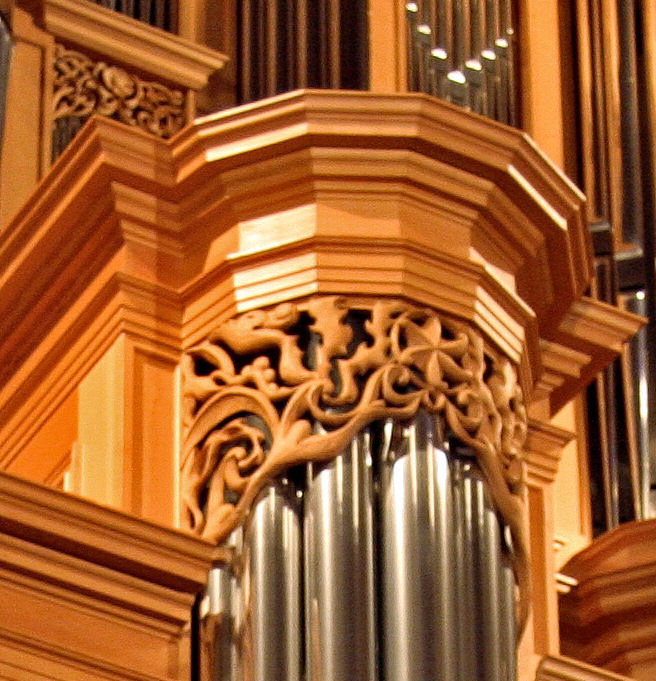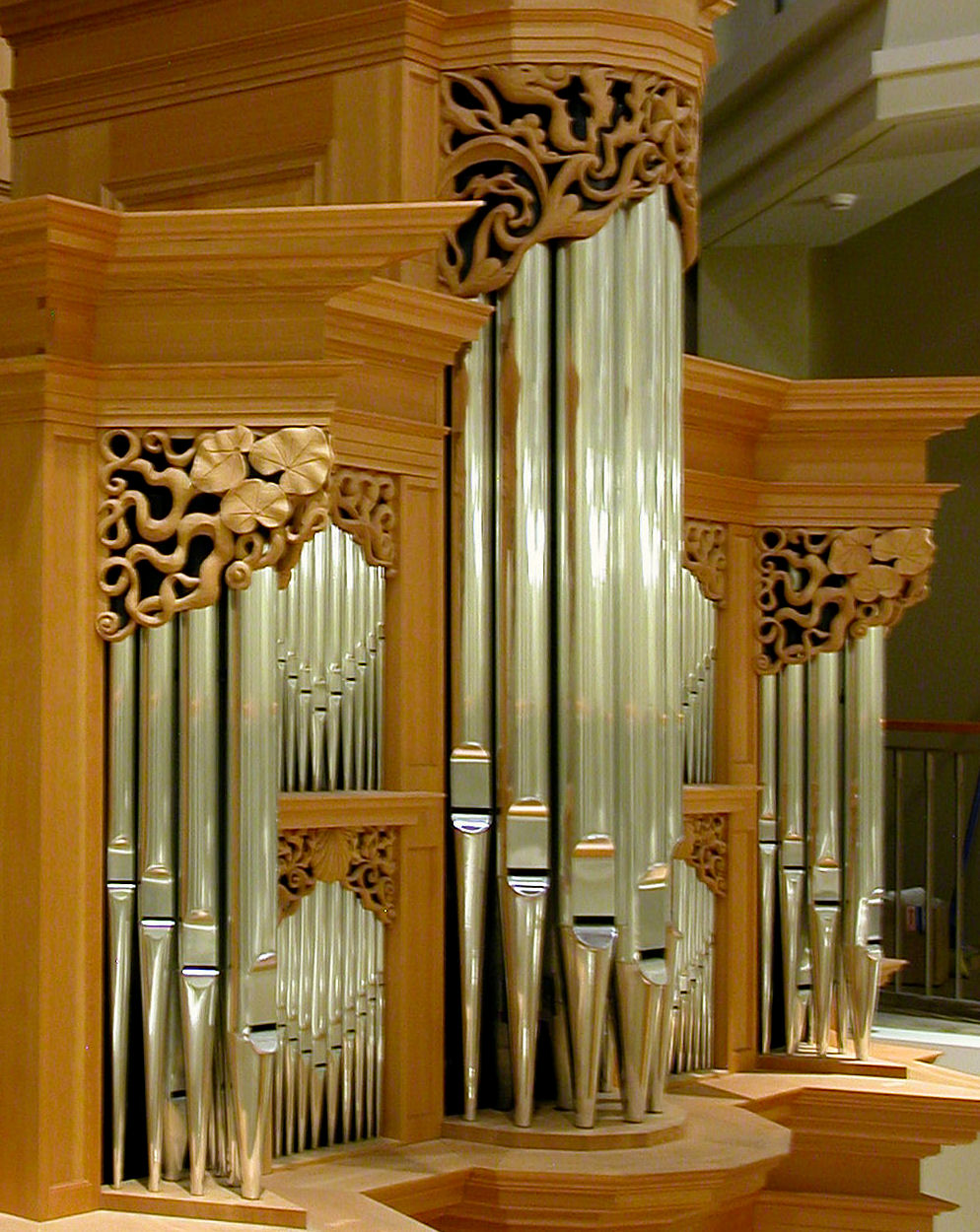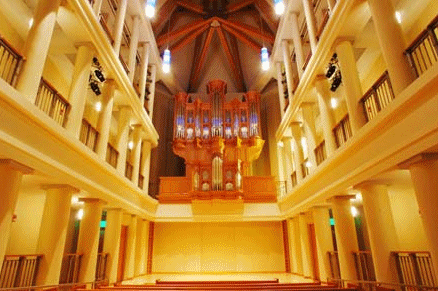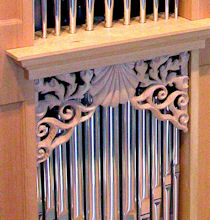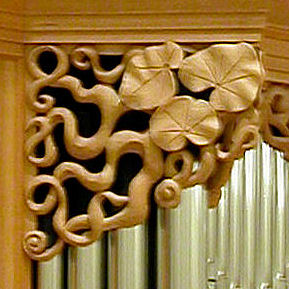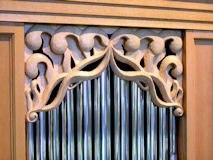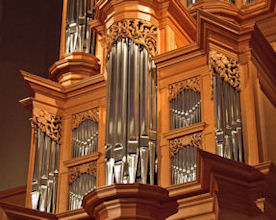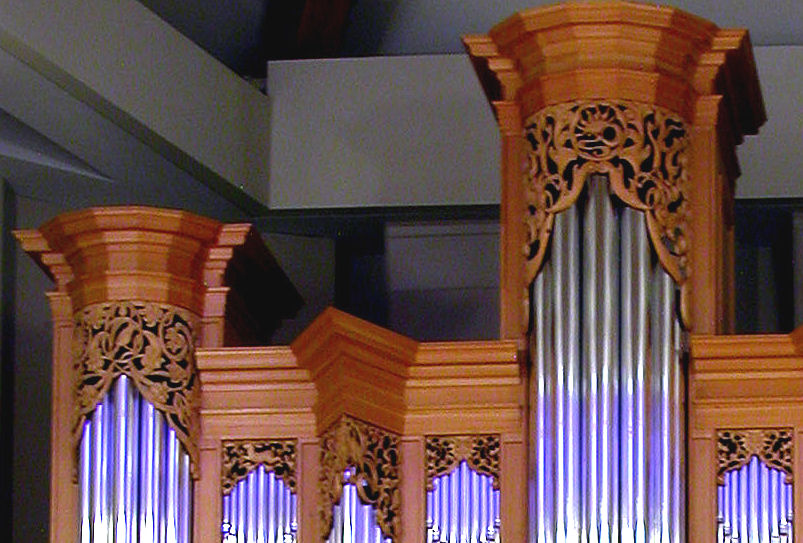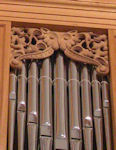"The intricate carvings on the organ case-designed and executed by Jude Fritts-
reflect a rich history of case design. The design of the organ case traditionally
reflects the geography of the surrounding area. Accordingly, the Fritts organ case
includes carving of many plants and animals indigenous to northern Indiana….
"The case carvings express the notion of living things that make sounds, stopping
just short of the human since the organ itself works from the breath of life. The
images progress from simple to increasingly sophisticated motifs, beginning in the
lowest parts of the case and moving upward.
"At the bottom of the Ruckpositive division are mollusks …, waves, water lilies,
seaweed, and a starfish…. Moving upwards, the carvings include roses…, rabbits, owls…,
herons, cardinals (the state bird of Indiana), and a sun burst…. Local plants, including
ivy, cattails, prairie grasses, and the leaves of the tulip tree, fill the upper case,
and the sun, the moon, and the clouds are at its center…. The case carvings include the
four elements of creation-air, earth, fire, and water…
"The artistry of Jude Fritts and all those who worked on this organ have made a
significant contribution to musical and artistic life on Notre Dame's campus."
